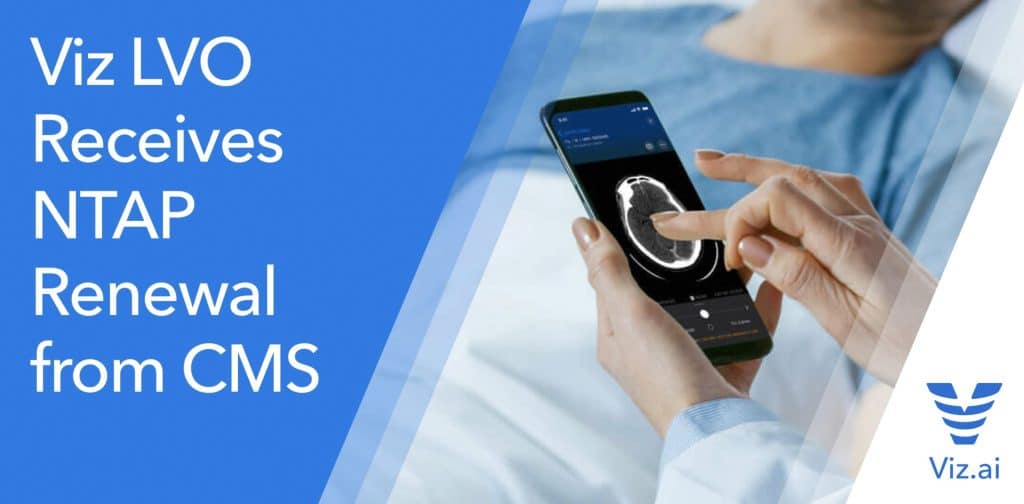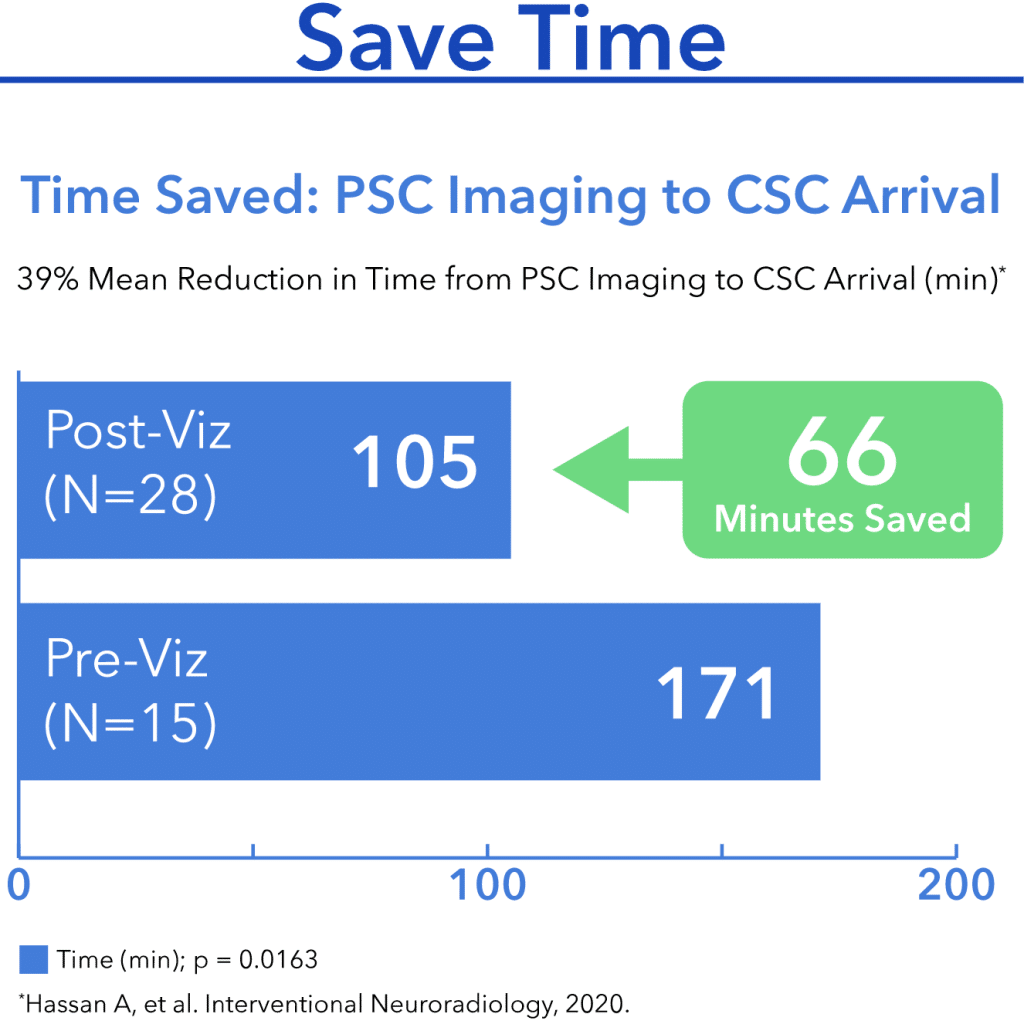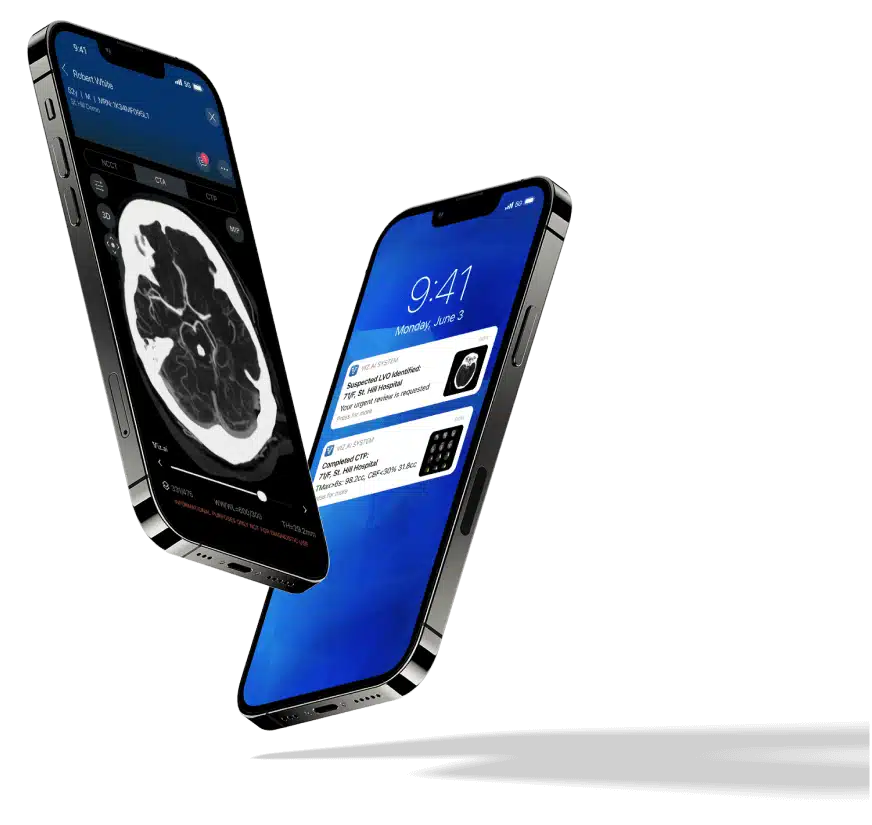Team Viz
Sep 07, 2021
5 min

CMS has historically used incentives to reward hospitals for helping patients by offering a bundled payment.
Advancements in technology for stroke treatments save brain and money
CMS has historically used incentives to reward hospitals for helping patients by offering a bundled payment that includes all costs, based on the Medicare Severity Diagnosis-Related Group (MS-DRG). However, often times there is significant lag between payments and true costs-especially when factoring in new and expensive technologies.
“Introduced in 2001, the CMS NTAP (New Technology Add-On Payment) program was created by Congress to help close this gap and support timely access to innovative therapies for the Medicare population. For technologies accepted under this program, CMS provides an additional payment to hospitals above the standard MS-DRG payment amount. There is an application, review, and approval process for the NTAP program” (Hassan, 2020). Viz.AI has been the first and only Artificial Intelligence (AI) software to be awarded the CMS NTAP as “Viz LVO uniquely demonstrated substantial clinical benefit to patients” (Viz.ai).
It is a well known fact, both in the stroke world and (hopefully) in stroke certified centers that 1.9 million neurons are irreparably destroyed during each minute of an ongoing stroke…this results in a loss of neurons at an hourly equivalent to 3.6 years of normal aging. This compared with the amount of disability that exists for our stroke survivors and the previously mentioned $68 billion dollar indirect cost of stroke provides significant opportunities to make great strides in taking stroke care to the next level.
Certification and AHA metrics determine the standard of care of Door to Recanalization as 120 minutes, the impact of detecting LVO and saving 66 minutes-or approximately 4 years of normal aging.
“Data from the Highly Effective Reperfusion Evaluated in Multiple Endovascular Stroke Trials (HERMES) collaborative suggests that every minute delay results in a loss of four days of disability-free life (Kunz, 2020). Clearly, delays in stroke care result in significant negative outcomes both for patients and for the financial well-being of the healthcare system” (Hassan, 2020).

Financial impact
From the NTAP implementation guide provided by Viz.AI, CMS has determined that $1,040 is the maximum add-on payment for each use of Viz LVO (formally Viz ContaCT). If costs exceed payments, Medicare pays the lesser of:
• 65 percent of the costs of the new technology (or)
• 65 percent of the amount by which the costs of the case exceed the DRG payment for the case.
To qualify, the patient must be an inpatient (not observation), undergoing evaluation for a suspected stroke and the DRG must exceed the standard DRG payment. The greater utilitarian benefit of the AI for stroke is beyond the ‘novel stage,’ yet the affinity to adopt such technology within healthcare is slow, despite the AI tech and apps ability to make life easier.
With all that has been discussed above, one would think it is a ‘no-brainer’ to invest in this type of software technology. According to Hassan (2020), “the median loss in net monetary benefit of thrombectomy per minute was calculated to be $1059, and saving 10 min on average across the USA would save $249 million annually. Implementation of Viz LVO has been demonstrated to save 66 min on average, suggesting a significant return on investment for CMS.” The intent of the NTAP program is to encourage early adopters of technology and ultimately show proof of concept.
Example of how care for the acute stroke patient is enhanced during the ER evaluation period.
“In many competitive environments, from sports to business, a belief exists that to get people to change their behavior, you must first change the culture. However, according to Kotter, ‘‘culture change comes last, not first…. Culture changes when a new way of operating has been shown to succeed over some minimum period of time’’ (p. 176).
This means that to get a group of healthcare providers to adopt new technology, it must be proven to employees, not only that the technology actually works, but how it will benefit the patients and moreover, the frontline providers. The efforts and reward those individuals who enthusiastically embrace changes made within the organization. AI technology is a landmark advancement in stroke care where the incentivization of utilizing the tool has the ability to use increasingly effective tools in the treatment and care we can provide.
References:
- Hassan AE. New Technology Add-On Payment (NTAP) for Viz LVO: a win for stroke careJournal of NeuroInterventional Surgery Published Online First: 24 November 2020. doi: 10.1136/neurintsurg-2020-016897
- Kunz WG, Hunink, MG, and Almekhlafi MA, et al. Public health and cost consequences of time delays to thrombectomy for acute ischemic stroke. Neurology 2020;95:e2465–75.doi:10.1212/WNL.0000000000010867pmid:http://www.ncbi.nlm.nih.gov/pubmed/32943483
- Medicare Program. Hospital inpatient prospective payment systems for acute care hospitals and the long-term care hospital prospective payment system and policy changes and fiscal year 2020 rates; quality reporting requirements for specific providers; Medicare and Medicaid promoting Interoperability programs requirements for eligible hospitals and critical access hospitals (federal register 16 AUG 2019. Available: https://www.federalregister.gov/documents/2019/08/16/2019-16762/medicare-program-hospital-inpatient-prospective-payment-systems-for-acute-care-hospitals-and-the
- The future of A.I. Powered Intelligent Care Coordination. https://www.viz.ai
